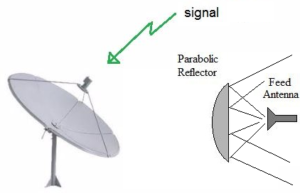Science > Physics > Communication
- Elements of Communications System
- General Working of Communication System
- Types of Communication System
- Attenuation, Distortion, Interference, and Noise
- Antenna and its Types
- Size of Antenna or Aerial
- Calculation of Antenna or Aerial Size
Terminology of Communication System
- Transducer
- Analog and Digital signals
- Transmitter and Receiver
- Modulator and Demodulator
- Bandwidth of Signal and Bandwidth of Transmitting Medium
Communication Channel: The Atmosphere
- Earth’s Atmosphere
- Importance of Radio Waves
- Space Communication
- Ground Waves and Skywaves
- Space Wave Propagation
- Expression for Coverage Area of Transmission Antenna
- Numerical Problems on Calculation of Coverage Area and Viewership
- The Principle of Satellite Communication
- Geostationary Satellite and its Uses
- Polar satellite and its Uses
- Global Communication
Communication Channels: Wires, Cables, and Optical Fibres
- Two-wire Transmission Lines
- Coaxial Cables
- Optical Fibres.
Optical Fibre: Principle, Construction, and Working
- Characteristics of Optical Fibre
- Construction of Optical Fibre
- Total Internal Reflection of Light
- Working of Optical Fibre
- Analytical Treatment of Optical Fibres
- Acceptance Angle and Acceptance Cone
- Numerical Aperture of Optical Fibre
- Fibre Attenuation
- Fabricating Optical Fibre
- Need for Modulation of Signal
- Size of the Antenna or Aerial
- Effective Power Radiated by Antenna
- Mixing Up of Signals From Different Transmitters
- Operating range
- Types of Carrier Waves
- Types of Modulation
- Features of Amplitude Modulated Wave
- Modulation Factor or Modulating Index
- Importance of the Modulation Index
- Expression For Modulation Index
- Demodulation
- Advantages Of Amplitude Modulation
- Disadvantages of Amplitude Modulation
- Disadvantages of Amplitude Modulation
Internet and Associated Technologies
- The Internet
- The Working of the Internet
- The World Wide Web
- Uses of the Internet
